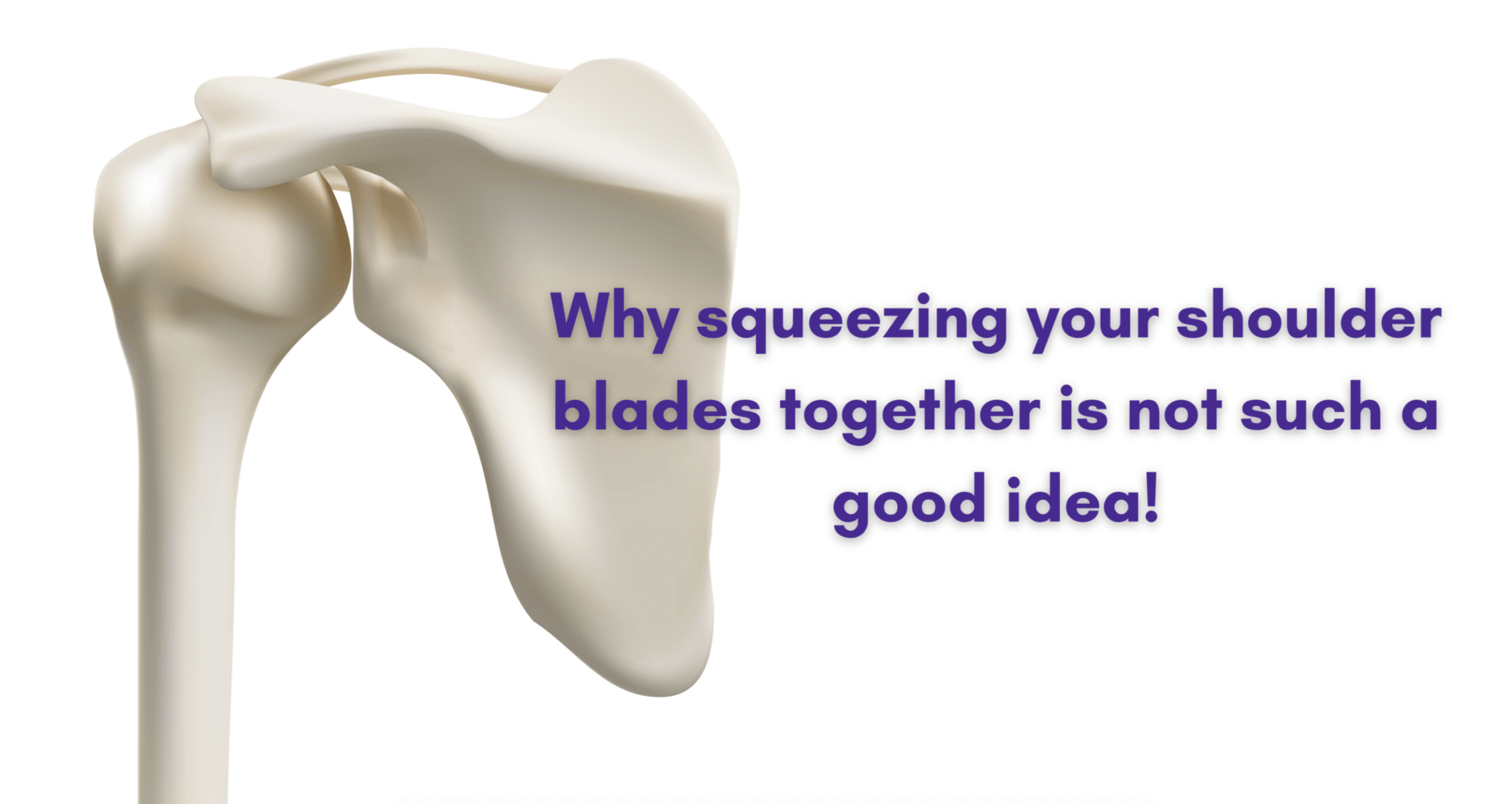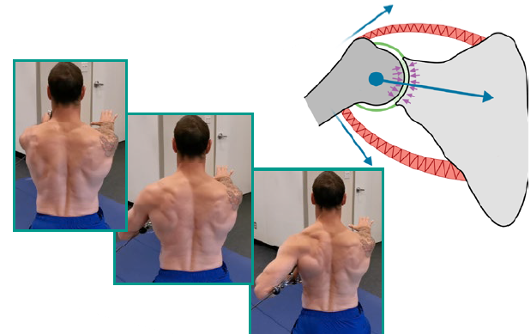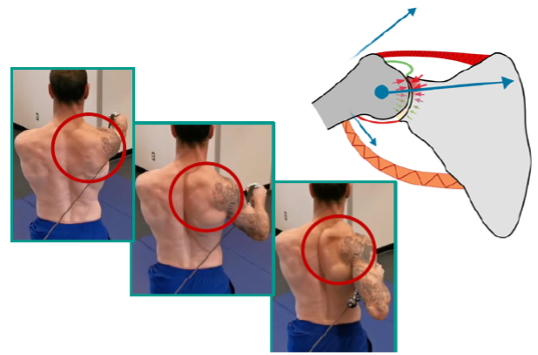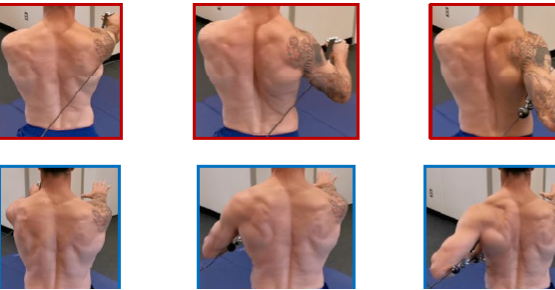
Why don't we start off by addressing the main concern: «What is the centering of joints, and why squeezing your shoulder blades together might not be such a good idea?» The easy answer might lie in joint alignment when exercising, and hence approach our training with caution and joint awareness. Joint centering, also known as functional centering of joints, refers to the position in which the joints are in maximum contact. This position is facilitated by the balanced coordination of the muscles that surround the joints. Ultimately, being able to maintain a centering of the joints throughout one's movements will improve joint health and prevent unnecessary pains or injuries. Fortunately, this is not as difficult as rocket science. Here we are going into an overview of what joint centering is, the benefits and why some outdated gym cues are irrelevant if you consider overall health when you exercise.
One of the main criteria for correct exercise and its primary purpose is health and, in terms of the following discussion – joint health. Most people do not even consider proper muscle contraction, let alone joint position. We, as human beings, were born in near-perfect conditions when it comes to posture and movement abilities (Zatsiorsky, 1998). You can watch babies, especially those under four months, and see how they get up from the floor or crawl and notice joint alignment before being influenced by our lifestyle habits (Horschig & Sonthana, 2021). Correct alignment of babies results from biological evolution and should give us insight on proper joint positioning.
During evolution, the joints adapted to repeated force inputs (Bobzhansky, 1973). The gravitational and inertial forces during movements shaped our joints (Tlapák & Dryák, 2018). Therefore, the position/alignment of the joints should correspond to the purpose for which they evolved. In this sense, we may consider the joints in their stabilization function (support of the foot/hand) or their dynamic function (movement). Therefore, there are available exercises that focus on similar basic patterns, such as Klapp exercising (Kolář, 2021).
From a physical point of view, joints work as smooth bearings. To best preserve their surfaces, it is necessary to spread the forces to as wide an area as possible (Kolář, 2021).
Centering is precisely what was mentioned above in the definition of joints. The requirement for preserving healthy joints is its alignment. More specifically, it is the position of the joints so that the acting forces on the joint aim to the middle of the curvature, to the center (Watkins, 1999). In this way, you will avoid slipping the ball of the joint out of the axis, which might lead to deformation of the joint capsule (Zatsiorsky, 1998). Furthermore, the muscles surrounding the area are optimally positioned for muscle-skeletal stabilization and movement (Kolář, 2021). This ideal joint alignment is known as – Functional joint centring (Tlapák & Dryák, 2018) (Figure 1).
Figure 1 – The shoulder joint in the functionally centred position.

This question was partly answered earlier. However, let us have a look at a few more reasons. First, it is essential to notice that the muscles connected (inserted, originated) around the joint create a synchronization of pulling/stabilizing forces in such a way that the joint is correctly aligned – centered. Imagine that one or several of them are pulling more than the others. Also, let us suggest that the one pulling more is significantly stronger than the others; hence the pull is even more intense. Logically, the stronger muscle will pull the joint more toward its direction of contraction and can cause the joint to move out of the centered position (Figure 2). That means that pressure will be transferred to the corresponding point of contact between the ball and the socket rather than to the maximum joint surface as desired (Whiting & Zernicke, 1998). In the long run, this imbalance can cause chronic injuries, joint capsule degeneration as the body’s response to hold the ball in the socket or joint cartridge damage.
Figure 2 – Shoulder joint out of the functionally centered position.

Second, the muscles used more in the fashion described above will become stronger, bigger and tighter (Figure 3). You may see development trends of those muscles in the gym when looking at trainees with poor exercise techniques. In the example above, the trapezius muscle (the muscle around the neck and upper back area) takes over most muscle work. In recent years, these particular muscles are becoming tighter due to our lifestyle, causing neck stiffness and leading to health-related problems such as headaches or migraines (Horschig & Sonthana, 2021). Then one should consider avoiding similar movements and focus on compensating for those non-desired movements in the gym.
Figure 3 – Muscle contours and size comparison for correct vs. incorrect shoulder joint movements – note the shoulder blade position and even muscle tone distribution of muscles that correspond with functional joint centring.

Third, joint condition is dependent on energy supplies, metabolism, and condition of the collaborating tissues (fascias, joint cartilages, muscles, etc.) and the level of the central nervous system (CNS) (Tlapák & Dryák, 2018). Hence you may influence the CNS via joint alignment, which is immediately noticeable. For example, while applying manual pressure to the humerus (bone of the socket of the upper arm) into the shoulder joint, you may experience relaxing of the muscles that fix the upper part of your shoulder blades and other hyperactive muscles (Kolář, 2021). Doing so will influence your CNS's momentary «habits» and hence the poor posture that can be translated into your daily life (Whiting & Zernicke, 1998).
If you work out, you might have already heard a cue in the gym during some exercises that you should squeeze your shoulder blades together. Taking into account the information presented in this blog, you may already have the answer. Next time, try asking one simple question: «Why?». So far, whenever I have asked this question to anyone who repeated this old cue, I have never received a reasonable answer. Some possible answers you might come across if you dare to ask follow: «Because of stabilization» (question arises - stabilization of what?), «To activate lats» (another follow-up question might arise – what is the mechanism of how the "lats" are activated by doing so?), or as simple answer as ‹To feel the muscles» (I would not feel them when doing the movement correctly?).
Interestingly, there are no studies justifying such a cue, except for a study focusing on activating shoulder blade movements after injuries by engaging the upper and middle trapezius muscles (Moeller et al., 2014). The whole matter about shoulder blades is the same as if somebody would tell me: «Push your knees together so you will feel the muscles better». Not many people would follow my advice, since a similar movement does not even look natural. The fact that you do not see your back does not mean that it looks natural from behind.
Joint alignment is influenced by the muscles you engage; the fact that you want to gain muscle mass of specific muscles does not necessarily mean it will benefit your joint condition and health. This article is not a critique; it is more about bringing awareness to some crucial processes that act within the body when one works out.
Some advice:
Figure 4 – Shoulder blade alignment during sled push with evenly distributed muscle tone (with client's permission).

Written by Petr Hamernik
//PT at IBEX Oslo
@petr_hamernik_pt
Bobzhansky, T. (1973). Nothing in Biology Makes Sense Except in the Light of Evolution. Am Biol Teach, 35, 125-129. doi:10.2307/4444260
Horschig, A., & Sonthana, K. (2021). Rebuilding Milo: The Lifter's Guide to Fixing Common Injuries and Building a Strong Foundation for Enhancing Performance. Las Vegas: Generic.
Kolář, P. (2021). Clinical rehabilitation. Praha: Alena Kobesová.
Moeller, C. R., Bliven, K. H., & Valier, A. R. (2014). Scapular Muscle-Activation Ratios in Patients With Shoulder Injuries During Functional Shoulder Exercises. J Athl Train, 49(3), 345-355. doi:https://www.ncbi.nlm.nih.gov/pmc/articles/PMC4080594/
Tlapák, P., & Dryák, Z. (2018). Posilování Kloubní Kondice: Centračně-stabilizační cvičení. Praha: ARSCI.
Watkins, J. (1999). Structure and Function of the Musculoskeletal System. Champaign: Human Kinetics Publishers.
Whiting, W. C., & Zernicke, R. F. (1998). Biomechanics of Musculoskeletal Injury. Champain: Human Kinetics.
Zatsiorsky, V. (1998). Kinetics of Human Motion. Champain: Human Kinetics.